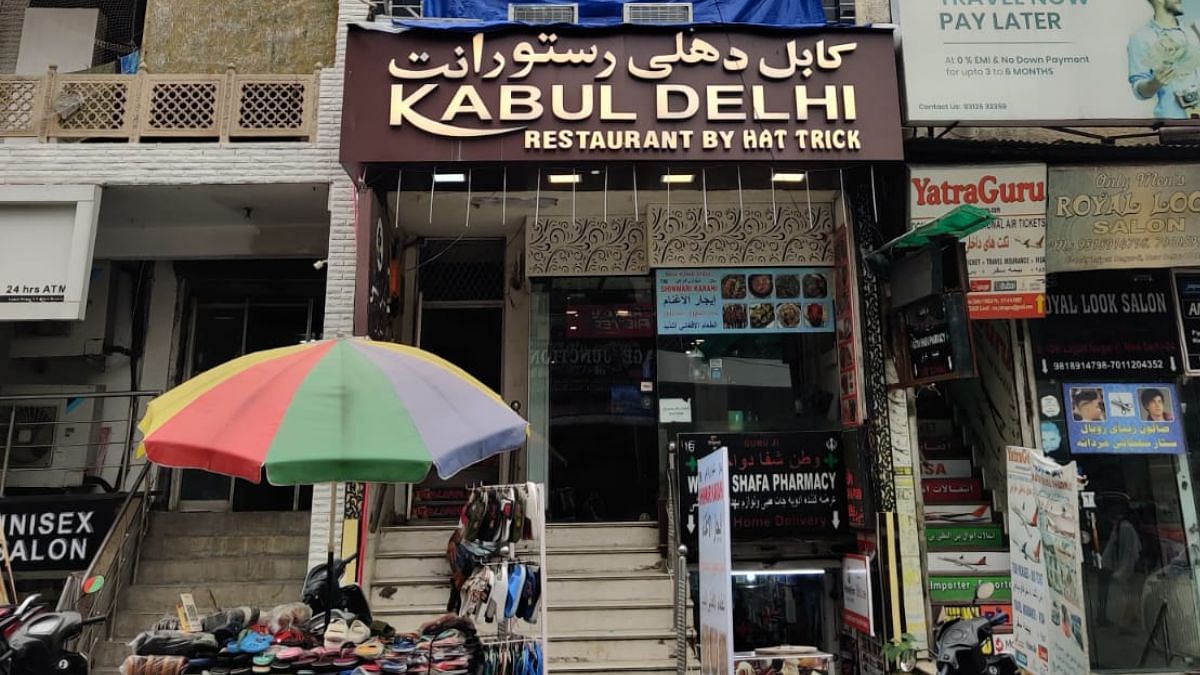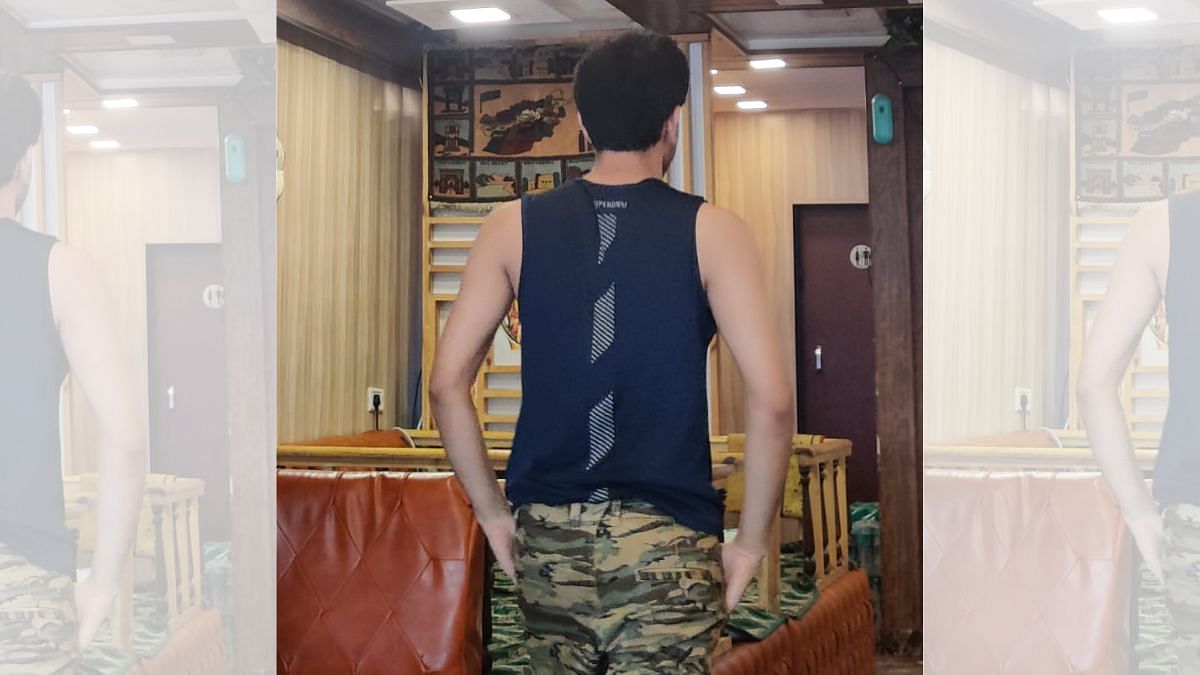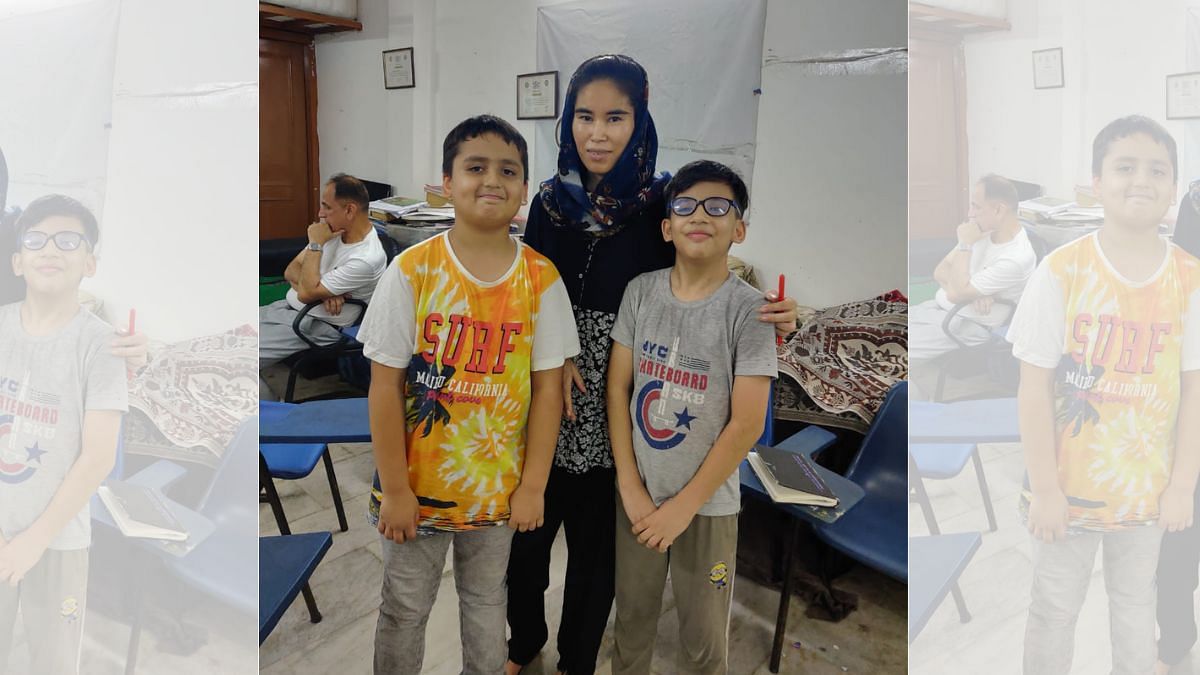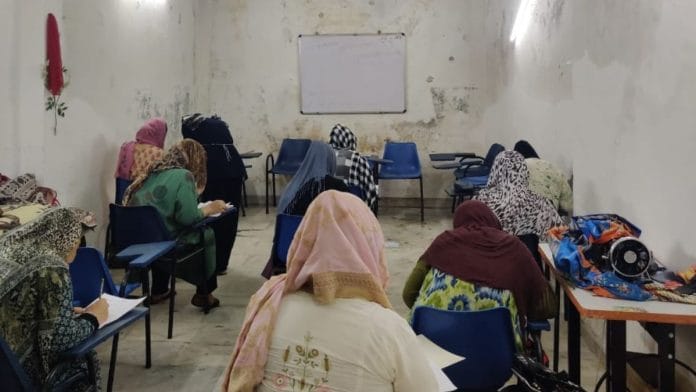New Delhi: Mohammad Nasser, 24, from Farah in western Afghanistan, longs for the Afghani pulao his mother used to make, while 45-year-old Ahmed Pervaz from Kabul reminisces about the 250 varieties of grapes available back home. Both live in Delhi and are among the many Afghans who have sought refuge in India over the decades, fleeing the conflict in Afghanistan.
The first wave of Afghan refugees arrived in Delhi in the early 1980s, fleeing the conflict that followed the Soviet invasion. A second wave occurred in 1996 during the first Taliban regime. In 2021, the Taliban’s return to power triggered yet another wave.
Thursday, 15 August, marks the third anniversary of the Taliban’s takeover of Afghanistan. In 2021, following the withdrawal of US troops after two decades of Western military presence, the Taliban swiftly regained control of the country and the government in Kabul. As the Taliban entered the capital, President Ashraf Ghani fled, leaving behind a nation in turmoil, with ordinary citizens gripped by fear and uncertainty. Those who managed to flee the country took refuge in Pakistan, Iran, and India, among others.
Ahmed Pervaz arrived in India in 2014 for medical treatment, never expecting his stay would stretch into a decade. He has assimilated. His saaf Hindi, a product of his love for Indian cinema, is evident as he quotes his favorite dialogue from the film Krantiveer starring Nana Patekar, “Yeh Musalman ka khoon, yeh Hindu ka khoon… bata ye is mein Musalman ka kaunsa, Hindu ka kaunsa (this is the blood of a Muslim, and this of a Hindu. Can you tell me which one belongs to the Muslim and which one to the Hindu)?”
A resident of East of Kailash, Pervaz works in Kasturba Niketan Complex in Lajpat Nagar, a colony largely inhabited by refugees from Afghanistan, Sudan, and university students from across the country. Though Pervaz has a Bachelor of Economics from Kabul University, he works as a handyman repairing ACs and light fixtures or helping people set up wi-fi connections. He is also a physical education coach, training students for inter-state matches across sports.
Reminiscing about his country, Pervaz’s face is a mix of nostalgia and despair. He recalls celebrating Independence Day in Afghanistan. “Your country gained freedom on 15 August, we got ours from the British on 19 August,” he said. “The country would dress up like a new bride with flowers everywhere and parades to watch.”
Afghanistan is now struggling for freedom again, but Pervaz remains hopeful. “If I live long enough, I’m sure everything will be alright one day.”
Just a few metres from the Kasturba Niketan Complex is Kabul Delhi, a restaurant that serves as a lifeline for Afghan refugees like Nasser. Though just 24, Nasser carries the weight of a journey far more arduous than his years suggest. Earning a modest monthly salary of Rs 10,000, Nasser rents a single room in Malviya Nagar.

Nasser arrived in India on 23 November, 2019 — a day when “everything changed”. His stay in India, now approaching five years, is marked by the annual renewal of his stay-visa, a constant reminder of his precarious situation.
His village Farah, he said, lacked educational facilities, forcing him to make a daily two-hour journey to attend school in a neighbouring village. “It took an hour to get there,” he said, “I had to change schools four or five times.”
Pursuing an education came at a steep price for Nasser. “People in Kajura village told me to stop studying,” he said. “They threatened my parents, saying they would kill me. That’s when I decided to get a passport and leave for India.”

In January 2019, Mohammad Sadiq Halimi, then the deputy education director for Farah Province, had received an ultimatum from local Taliban leaders. This came after, according to UNICEF, attacks on schools in Afghanistan surged between 2017 and 2018, tripling from 68 to 192 incidents — the first such increase since 2015.
Facing escalating threats to his life and that of his family, Nasser fled. He was just 18 at the time. He dreams of one day pursuing a Bachelor’s degree in English literature.
Life in India for him has been anything but easy. Back home, his family runs a ration shop, their main source of income. Initially, they were able to send him some monetary support, but that assistance dried up after the first year and a half. The pandemic hit Nasser particularly hard. With no income and no way to send or receive money from his family, he survived on a meager diet of roti, salt, and onion.
Amid his daily struggles, his thoughts often drift to the comforts of home, Nasser said.
This yearning for familiar flavours, whether it’s the taste of fruits local to their country or a comfort dish, underscores the deep cultural and emotional challenges faced by refugees whose primary concern is securing a dignified livelihood and a better future for their children. Once celebrated for their exquisite khamak embroidery, carpet-making, and pottery, Afghan refugees now find themselves pushed to the economic margins, struggling to make ends meet as opportunities dwindle.
Also read: Pakistan’s solution for terrorism is to expel Afghan refugees – but it’ll only get worse
The women refugees
In a cramped classroom next to a pharmacy in Jangpura, New Delhi, the Mastorat Women’s Empowerment and Leadership Foundation serves as a lifeline for Afghan women refugees. Founded by Zahra Sharifi and Sher Shah in 2021, the tuition centre helps women and children learn English and vocational skills.
The centre operates out of a small, run-down room where the plaster is peeling off the walls. Sharifi and Shah struggle to pay rent and electricity for the space. However, it is rich in one resource — stacks of translation books, from Pashto to English and Dari to English, are piled high on a table.
For the women who gather here, this centre is more than a place of learning. It’s a vital support system with a sense of community in the face of displacement.
“We laugh, we talk, we share our problems,” said one of the women. “This is a place where we can be ourselves.”
Zahra Sharifi came to India in 2014 on a government scholarship to pursue a bachelor’s degree in commerce, one of just three women among 16 scholarship recipients. Back home, she excelled in school, with Pashto as her favorite subject. But since arriving in India, she has lost touch with the language, with no one to practice it with.

She is dedicated to empowering Afghan women through the Mastorat foundation. At this centre, women and children not only learn English and vocational skills like sewing but also find a crucial support network. “There is no voice for women,” Zahra said. “I have to work for Afghan women. When I came here, I got a better education. I need to teach them about their rights, how to fight, and how to stand up for themselves.”
Zahra was raised by a single mother who valued education. She is now supported by her brother who runs a dry fruit shop. She plans to move to Canada by the end of the year, while her brother and mother want to settle in Australia, continuing the cycle of displacement and reunification.
Sher Shah, a polyglot and former UNHCR translator, teaches English at Mastorat.
Both Zahra and Sher Shah dream of one day eventually returning to their homeland to educate the next generation.
During the Olympics, Afghan athlete Kimia Yousofi had drawn global attention to the plight of Afghan women with a handwritten message on her race bib: “Education. Sport. Our Rights”. According to UN Women, Afghanistan is the only country where girls are completely banned from attending high school.
A report titled “Women Seeking Security, Asserting Agency” by Rita Manchanda and Ananya Kundu, published by Women’s Regional Network says, “To be an Afghan asylum seeker or refugee in India is to lead a life of economic uncertainty, deprivation and depressing prospects for one’s children’s futures”.
According to the report, an overwhelming majority of refugee cases involve “gender-related motivation” as the driving factor for their flight, leading to the denial of basic freedoms like studying, working, or even going out unaccompanied.
Zaniab Mahmoodi, a 35-year-old mother of five, came to India in 2015 after the death of her husband. Pregnant with her youngest child, she had no choice but to flee Afghanistan when her husband’s family pressured her to marry her brother-in-law against her will. With experience in tailoring, Zaniab started her own boutique in India, but it struggled during the pandemic.
Now working as a seamstress, she remains determined to provide a better future for her children. Her eldest daughter is studying computer science to help support the family.
Women like Zainab and Zahra refuse to give up hope. Another refugee, Rabiya, a 50-year-old from Mazar-i-Sharif, Afghanistan, who came to India in search of a better life in 2017, perhaps captures the sentiment of many refugees best — ‘He (Allah) will take care of us.”
(Edited by Zinnia Ray Chaudhuri)
Also read: Afghan women didn’t want to seek refuge in India—They hardly had other options






